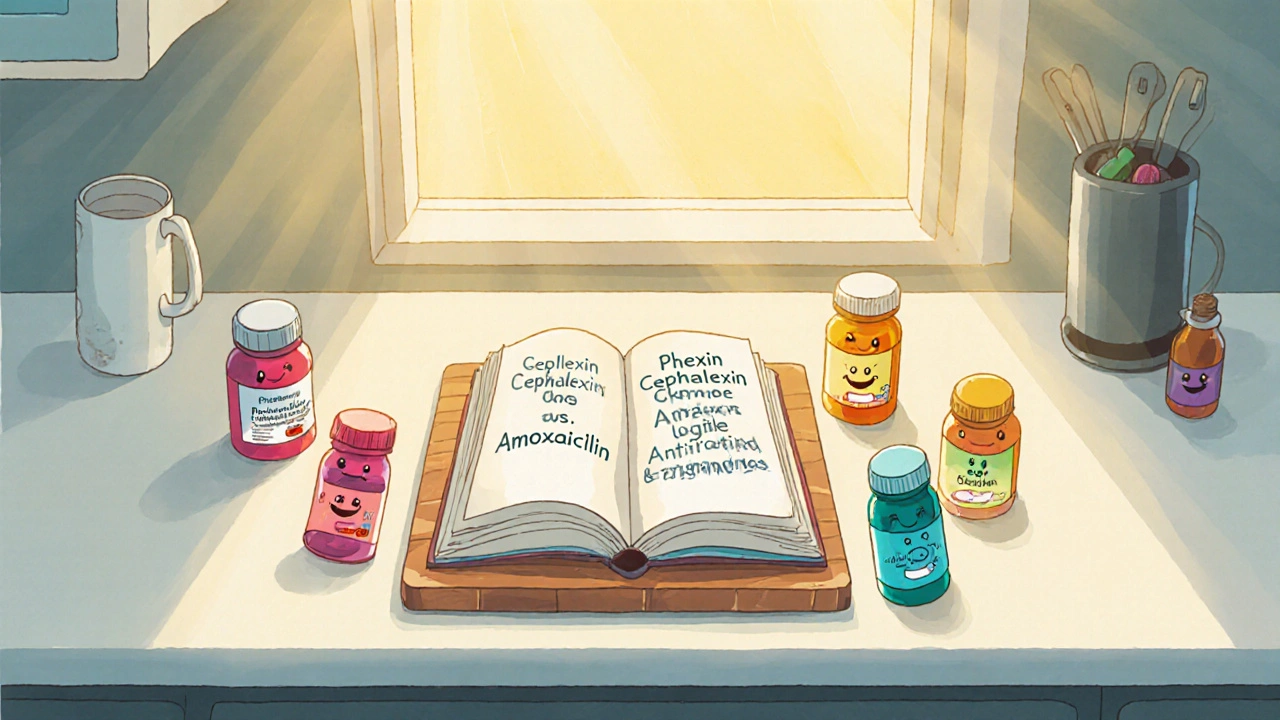Cephalexin: What It Is, How It Works, and When It's Used
When you have a bacterial infection—like a skin sore, a sinus infection, or a bladder issue—your doctor might reach for Cephalexin, a first-generation cephalosporin antibiotic used to treat common bacterial infections. Also known as Keflex, it's one of the most prescribed antibiotics in primary care because it works reliably, costs little, and has a well-known safety profile. Unlike broad-spectrum drugs that hit everything, Cephalexin targets specific bacteria, making it a smart first choice for many everyday infections.
Cephalexin belongs to the cephalosporin family, which is closely related to penicillin. That means if you’re allergic to penicillin, you might also react to Cephalexin—so always tell your doctor about any drug allergies. It’s not for viral infections like colds or the flu. But for strep throat, cellulitis, or a urinary tract infection caused by susceptible bacteria, it’s often the go-to. It’s taken by mouth, usually two to four times a day, and most people start feeling better in a couple of days. Still, you finish the whole course, even if you feel fine. Stopping early can let the toughest bacteria survive and come back stronger.
Related to Cephalexin are other antibiotics like Cefdinir, a second-generation cephalosporin often used for ear infections and bronchitis, and Tetracycline, a broad-spectrum antibiotic used for acne and Lyme disease. While Cefdinir (sold as Omnicef) covers a wider range of bacteria, Cephalexin is cheaper and just as effective for many common bugs. Tetracycline, on the other hand, works differently—it’s not a cephalosporin at all—and can’t be used in kids under 8 or pregnant women. Knowing these differences helps you understand why your doctor picks one over another.
People often ask if generic Cephalexin is just as good as the brand name. The answer is yes. The FDA requires generics to work the same way, in the same amount, and with the same safety profile. Most pharmacies stock the generic version because it’s a fraction of the cost. You’ll see it labeled as "cephalexin monohydrate" on the bottle. No magic ingredients. Just the same active drug.
Side effects? Most people have none. But some get stomach upset, diarrhea, or a mild rash. If you develop severe diarrhea with blood or mucus, or swelling in your face or throat, stop taking it and call your doctor right away. Those are rare, but serious. And don’t mix it with alcohol unless your doctor says it’s okay—some people report nausea or flushing.
What you’ll find in the posts below is a real-world look at how Cephalexin fits into daily health decisions. You’ll see how it compares to other antibiotics like Cefdinir and Tetracycline, what infections it actually works for, and how to avoid common mistakes—like taking it when you don’t need it, or stopping too soon. There’s no fluff. Just clear, practical info from people who’ve used it, doctors who’ve prescribed it, and data that backs it up.

Cephalexin (Phexin) vs. Common Antibiotic Alternatives: Full Comparison Guide
Finnegan O'Sullivan Oct 16 11A detailed guide comparing Phexin (Cephalexin) with top antibiotic alternatives, covering uses, side effects, cost and how to pick the right drug.
More Detail